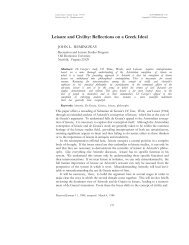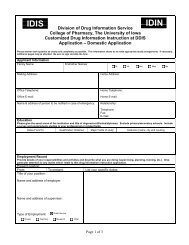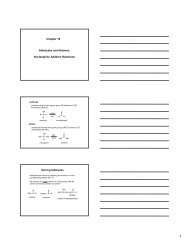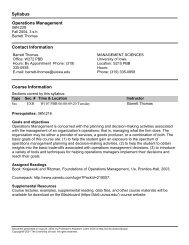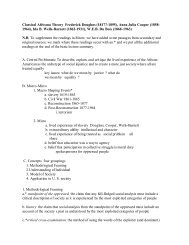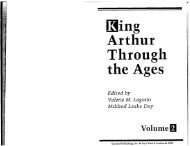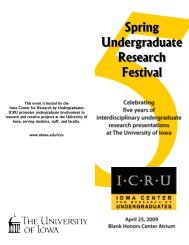Twenty-Five Years of Batson: An Introduction to ... - University of Iowa
Twenty-Five Years of Batson: An Introduction to ... - University of Iowa
Twenty-Five Years of Batson: An Introduction to ... - University of Iowa
You also want an ePaper? Increase the reach of your titles
YUMPU automatically turns print PDFs into web optimized ePapers that Google loves.
2012] TWENTY-FIVE YEARS OF BATSON 1417<br />
vindicate <strong>Batson</strong> claims; and (2) when a trial judge’s finding concerning<br />
intent is defensible, appellate deference is manda<strong>to</strong>ry.<br />
Thomas Miller-El’s <strong>Batson</strong> claim reached the Supreme Court twice. 200 A<br />
prosecu<strong>to</strong>r peremp<strong>to</strong>rily struck ten <strong>of</strong> eleven black jurors in Miller-El’s<br />
capital murder trial. 201 After Texas courts rejected his <strong>Batson</strong> claim, the<br />
defendant filed a federal habeas corpus petition. 202 The district court also<br />
rejected his claim, and the Fifth Circuit denied the certificate necessary <strong>to</strong><br />
appeal that ruling. 203 The sole question before the Supreme Court was<br />
whether the court <strong>of</strong> appeals should hear Miller-El’s case. 204 The governing<br />
statute provided that a certificate <strong>of</strong> appealability should be issued if a<br />
habeas petitioner “demonstrate[s] ‘a substantial showing <strong>of</strong> the denial <strong>of</strong> a<br />
constitutional right.’” 205 This standard is satisfied if reasonable appellate<br />
judges “could disagree” with a trial judge’s determination or could find that<br />
“the issues presented are adequate <strong>to</strong> deserve encouragement <strong>to</strong> proceed<br />
further.” 206<br />
Eight Justices easily concluded that the court <strong>of</strong> appeals should have<br />
issued a certificate <strong>of</strong> appealability. 207 They concluded that the court <strong>of</strong><br />
appeals had applied “<strong>to</strong>o demanding a standard” and, “more<br />
fundamental[ly],” had improperly addressed “the substance <strong>of</strong> an appeal”<br />
over which it had no jurisdiction. 208 With only appealability at issue, the<br />
question was whether the <strong>Batson</strong> claim was debatable, not whether it had<br />
merit. 209<br />
Because the government conceded that the accused had established a<br />
prima facie case and the defendant acknowledged that the state had met the<br />
rebuttal requirement with facially valid explanations, the issue was “the<br />
persuasiveness” <strong>of</strong> those explanations. 210 The Court recognized that a trial<br />
judge’s determination <strong>of</strong> intent was a purely factual finding, entitled <strong>to</strong><br />
“significant deference” on appeal and <strong>to</strong> even more deference in habeas<br />
proceedings. 211 Deference, however, did “not . . . preclude relief.” 212 When<br />
200. See Miller-El v. Dretke (Miller-El II), 545 U.S. 231 (2005); Miller-El v. Cockrell (Miller-El<br />
I), 537 U.S. 322 (2003).<br />
201. Miller-El I, 537 U.S. at 326.<br />
202. Id. at 329. The accused had been convicted and sentenced <strong>to</strong> death. Id. at 328.<br />
203. Id. at 326–27.<br />
204. See id. at 335.<br />
205. Id. at 327 (quoting 28 U.S.C. § 2253(c)(2) (2006)).<br />
206. Id.; see also id. at 336 (stating that this “threshold inquiry” is whether the “resolution”<br />
<strong>of</strong> “petitioner’s constitutional claims . . . was debatable amongst jurists <strong>of</strong> reason”).<br />
207. Id. at 341.<br />
208. Id. at 341–42.<br />
209. Id. at 336, 342.<br />
210. Id. at 338–39.<br />
211. Id. at 339–40.<br />
212. Id. at 340.





